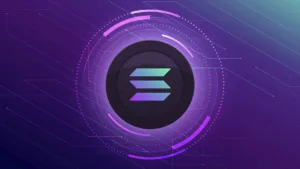On Tuesday, the Solana blockchain had a big issue – an outage stopped block creation for over four hours. Solana, a network known for its fast speed and reliability, experienced another outage. This is not the first time this has happened. Validators had to restart with new software from Solana Labs. It had an important fix to solve the main issue.
The Solana Foundation has not released a detailed report outlining the reasons behind the outage. Nevertheless, Matthew Sigel, Head of Digital Assets Research at VanEck, shared insights on X (formerly Twitter), which were subsequently reshared by co-founder Anatoly Yakovenko. These insights offer a technical explanation of the events leading to the disruption.
Sigel’s examination reveals a significant weakness in the Berkley Packet Filter (BPF) loader, a fundamental element crucial for deploying, upgrading, and executing programs within the Solana network. This mechanism plays a vital role in the deployment, upgrade, and execution of programs on the Solana network.
Network Restart Pending Solana Fix
He explained that the BPF loader, short for ‘Berkley Packet Filter,’ encountered a failure attributed to a bug associated with a recent Solana Improvement Proposal (SMID). This proposal had modified BPF features, specifically eliminating the use of metadata, which was considered redundant. As a result, the mechanism to deploy, upgrade, and execute programs on Solana was affected.
However, Testing is still happening to fix the flaw found during testnet operations. However, the solution has not been applied to the main network yet. “Sigel said that the developers had changed the BPF code to fix the bug. This required an important update to the main software.” This ensures the network can safely restart once the issue is resolved.
To restart the network, validators must generate a snapshot of the most recently verified block by 66% of the network, establish a consensus on this block, and subsequently initiate the chain restart. Full network restoration is contingent upon 80% of validators concurring on the final block; there exists a potential risk of disruption if the corrective action fails to meet expectations.
Related Reading | https://btcpolitan.com/cleanspark-bold-move-doubling-bitcoin-hash-rate-ahead-of-halving-surge/
The author’s views are for reference only and shall not constitute any investment advice. Please ensure you fully understand and assess the products and associated risks before purchasing.




Comments (No)